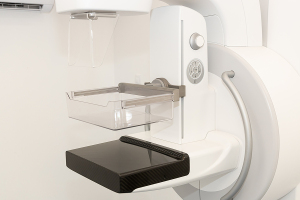by
John R. Fischer, Senior Reporter | October 17, 2022

Reimbursement disparities lead to Black women having less access to new, more advanced mammography technologies.
Black women are less likely to have access to new mammography technology, even at the same healthcare institution.
Researchers from the Neiman Health Policy Institute and the Radiology Health Equity Coalition (RHEC) say reducing racial disparities around access to novel, advanced breast cancer imaging techniques is possible but requires reforms in reimbursement and incentive policies for Medicare coverage.
In a retrospective study of over four million claims, the odds of a Black woman receiving digital mammograms instead of screen-film mammography was 0.80, compared to white women, between 2005 and 2009. With the introduction of digital breast tomosynthesis, the odds were less likely, at 0.84, from 2015 to 2020.



Ad Statistics
Times Displayed: 47051
Times Visited: 1430 MIT labs, experts in Multi-Vendor component level repair of: MRI Coils, RF amplifiers, Gradient Amplifiers Contrast Media Injectors. System repairs, sub-assembly repairs, component level repairs, refurbish/calibrate. info@mitlabsusa.com/+1 (305) 470-8013
"Inequities result when lower payments make technology investments economically unsustainable for practices that serve higher proportions of Medicare patients,” said study co-author Eric Christensen, principal research scientist in health economics for the Harvey L. Neiman Health Policy Institute and adjunct professor of health services management at the University of Minnesota, in a statement.
When compared across institutions, Black women were 3.8% less likely to undergo digital mammography in 2011. This difference decreased to 1.2% in 2016, showing that these discrepancies are temporary and appear to be decreasing, even with the transition to DBT full-time still underway.
Distributing new technologies in underserved communities where public insurance is more prevalent does decrease differences, but bringing them to these areas to begin with is challenging due to Medicare reimbursement being 1.2 to 1.8 times lower than that of private insurers.
Along with his colleagues, Christensen says that providers must also strive to be equitable in the care they provide, and that better reimbursement policies will help by encouraging investments in sites that serve disadvantaged individuals.
This in turn has the potential to improve population health, which is significant here since Black women are 40% more likely to die from breast cancer, despite incidence rates among Black and white women being approximately the same.
"Current reimbursement contributes to inequity because locating new technology in facilities that serve patients with public insurance, Medicare and Medicaid, is not economically sustainable," said Christensen. "CMS can create economic incentives to lessen disparities through reimbursement that is either comparable to private payers or that more directly incentivizes adoption of newer technology in underserved communities."
The findings were published in
Radiology.

